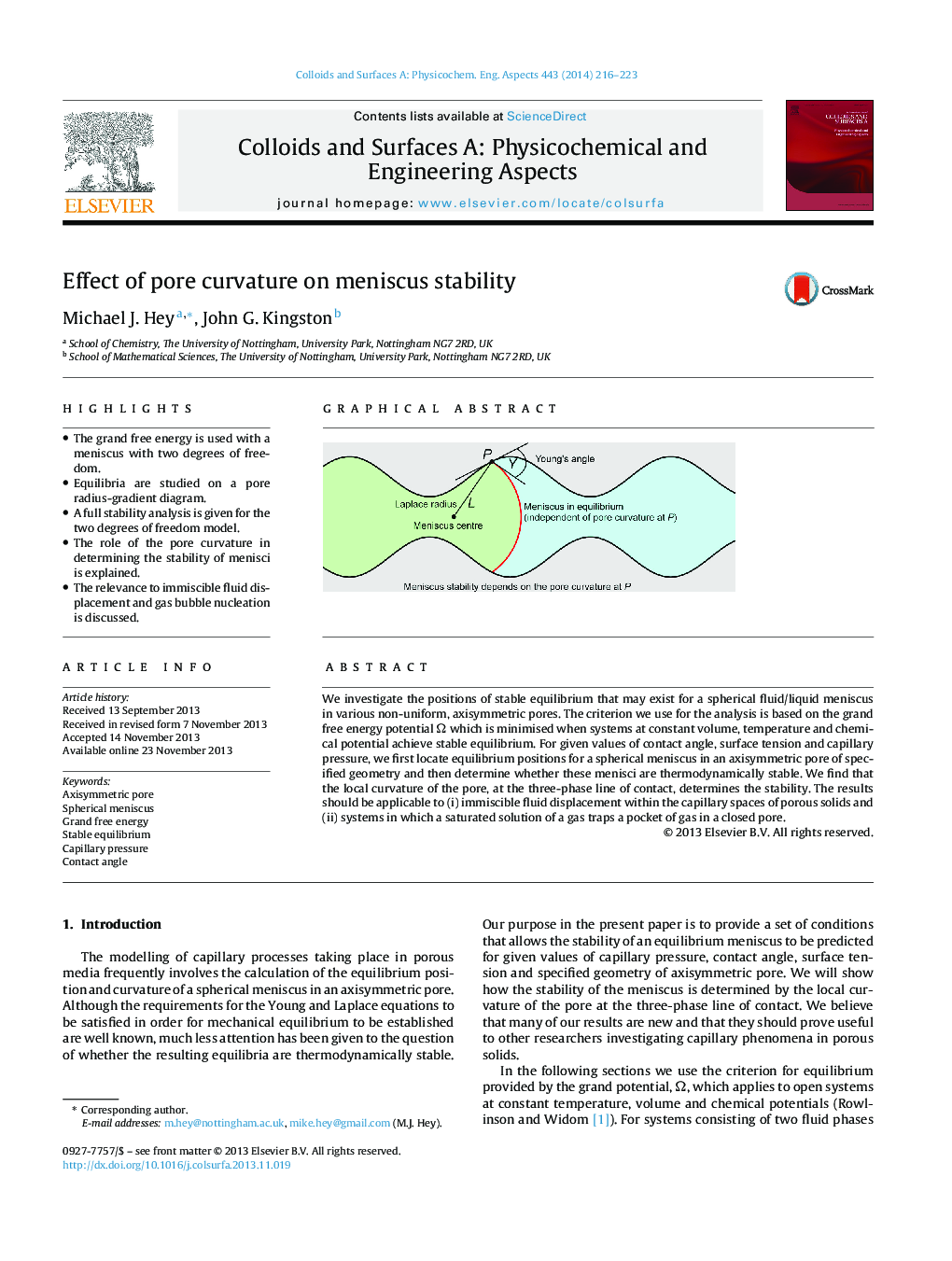| Article ID | Journal | Published Year | Pages | File Type |
|---|---|---|---|---|
| 592989 | Colloids and Surfaces A: Physicochemical and Engineering Aspects | 2014 | 8 Pages |
•The grand free energy is used with a meniscus with two degrees of freedom.•Equilibria are studied on a pore radius-gradient diagram.•A full stability analysis is given for the two degrees of freedom model.•The role of the pore curvature in determining the stability of menisci is explained.•The relevance to immiscible fluid displacement and gas bubble nucleation is discussed.
We investigate the positions of stable equilibrium that may exist for a spherical fluid/liquid meniscus in various non-uniform, axisymmetric pores. The criterion we use for the analysis is based on the grand free energy potential Ω which is minimised when systems at constant volume, temperature and chemical potential achieve stable equilibrium. For given values of contact angle, surface tension and capillary pressure, we first locate equilibrium positions for a spherical meniscus in an axisymmetric pore of specified geometry and then determine whether these menisci are thermodynamically stable. We find that the local curvature of the pore, at the three-phase line of contact, determines the stability. The results should be applicable to (i) immiscible fluid displacement within the capillary spaces of porous solids and (ii) systems in which a saturated solution of a gas traps a pocket of gas in a closed pore.
Graphical abstractFigure optionsDownload full-size imageDownload as PowerPoint slide
